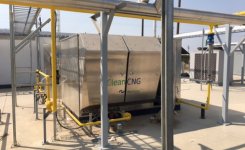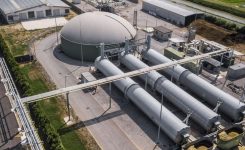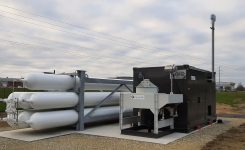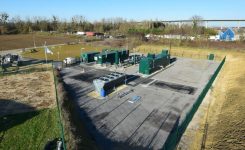News
THE NATURAL GAS MARKET – A KEY SOURCE IN THE ENERGY MIX IN THE SHORT AND MEDIUM TERM
The Oil & Gas Infrastructure Market in the coming years
A recent study showed that the Oil and Gas infrastructure market is set to increase in the coming years with a growth rate of more than 6% from 2022 to 2030 reaching more than $1,115 billion.
One of the factors influencing this scenario is the increasing demand for natural gas and growing exploration and production activities.
The Middle East, Africa and Latin America appear to be driving this growth:
In the Middle East and Africa, investments by public and private operators aimed at developing new fields and regulatory policies favourable to both the improvement of existing infrastructure and the creation of new pipelines are driving the sector.
In Latin America, it has been estimated that the oil and gas infrastructure market will exceed USD 125 billion by 2030 due, on the one hand, to the increasing number of mature and conventional fields and, on the other hand, to the development of new resources, including natural gas reserves. In addition, the growth of water, rail and road transport facilities, coupled with the increase in oil and gas distribution networks, will stimulate market demand. Favourable government measures taken in Argentina and Brazil to boost exploration of oil and gas reserves will stimulate the market.
The role of natural gas in electricity production in Europe compared to other energy sources
During the presentation of the Global Gas Report 2022 at the 28th IGU World Gas Conference, the importance of the energy mix, in which natural gas is a relevant source for the energy transition, was confirmed.
Indeed, the IGU President noted that “… gas infrastructure investment remains critical for meeting global energy demand. It became more urgent than ever to help resolve the energy crisis the world is suffering today. Importantly however, this investment and future growth of the gas sector comes with a responsibility to be compatible with the goals of the energy transition and Paris Agreement. …”.
Electricity production in Europe is characterised by the use of a mix of energy sources (renewables, nuclear, natural gas, coal and oil) within which natural gas represents an important share (around 20%).
In France, it is nuclear power that, with 67%, represents the largest energy source used in the country for electricity production; this is followed by renewables with 23%, natural gas with 6% and, finally, coal and oil with 4%;
In Germany, it is renewable energy sources that take the lead with 44%, followed by coal with 30%, natural gas with 14%, nuclear with 10%, and oil with the remaining 2%;
It is in Italy that the use of natural gas, compared to other energy sources, reaches more than 50%, followed by renewables (39%), coal (6%) and oil with the remaining 5%.
SAFE’s contribution in Oil & Gas: full-stream solutions tailored to customer needs
From gas recompression in wells to turbine feeding, from underground gas storage to flare gas recovery and gas gathering: these are the fields of application of the Gas Treatment division. SAFE’s tailor-made approach allows it to address each individual requirement by providing a unique and customised response.
The portfolio of installations counts more than 110 units installed. It consists of compact single or double skid designs with the compressor coupled to an electric or gas engine and all auxiliaries including cooling, filtration, pulsation suppression. High levels of safety are guaranteed through weatherproof and weatherproof enclosures equipped with gas detection and fire-fighting systems.









